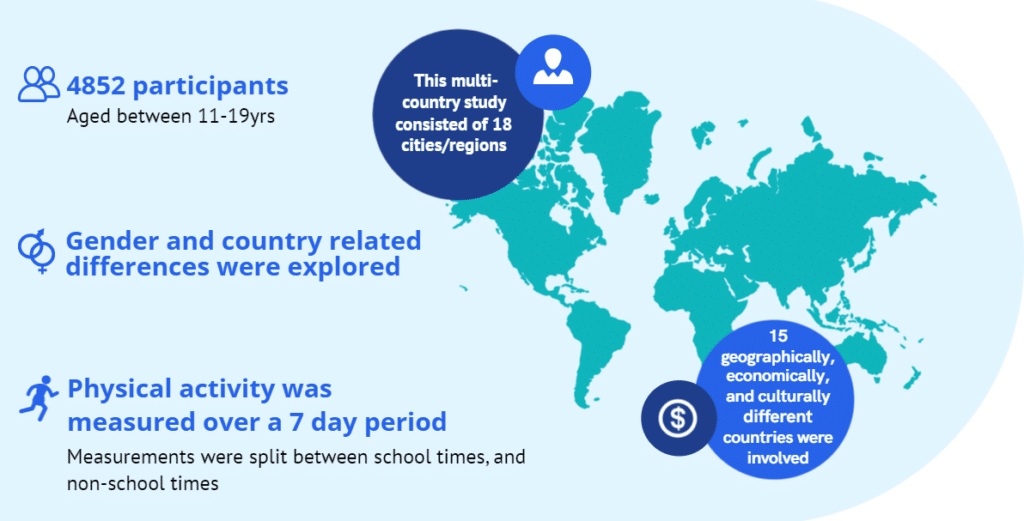School based and non-school based physical activity and its association with adolescents’ weight status
A recently published IPEN Adolescent study highlights the importance of creating weight management strategies for adolescents that are specific to their city and daily behaviours. These findings could help inform the creation of future physical activity recommendations worldwide that can help benefit your adolescent’s overall health and wellbeing.
Adolescent overweight and obesity have an important health impact. Next to physical health consequences like increased likelihood of cardiovascular diseases and diabetes, it can lead to lifelong challenges that affect the happiness and comfort of the adolescent, including depression, anxiety, and reduced self-esteem. Current obesity levels are extremely high worldwide. Research has demonstrated that daily physical activity (movement) can help manage obesity levels.
This study included countries from all over the world. It focused on the association of physical activity and sedentary time (sitting), during and outside of school hours, on an adolescent’s weight status. The results could help inform the creation of effective weight management strategies.

The study found that the relationship of physical activity with adolescent’s weight differed between cities. This could be due to the behavioral differences of adolescents around the world. These differences could include a difference in diet, or types of physical activities performed. They also found that physical activity performed outside of school may help manage an adolescent’s weight more than physical activity performed during school.
Want to read more? Access the full publication here

